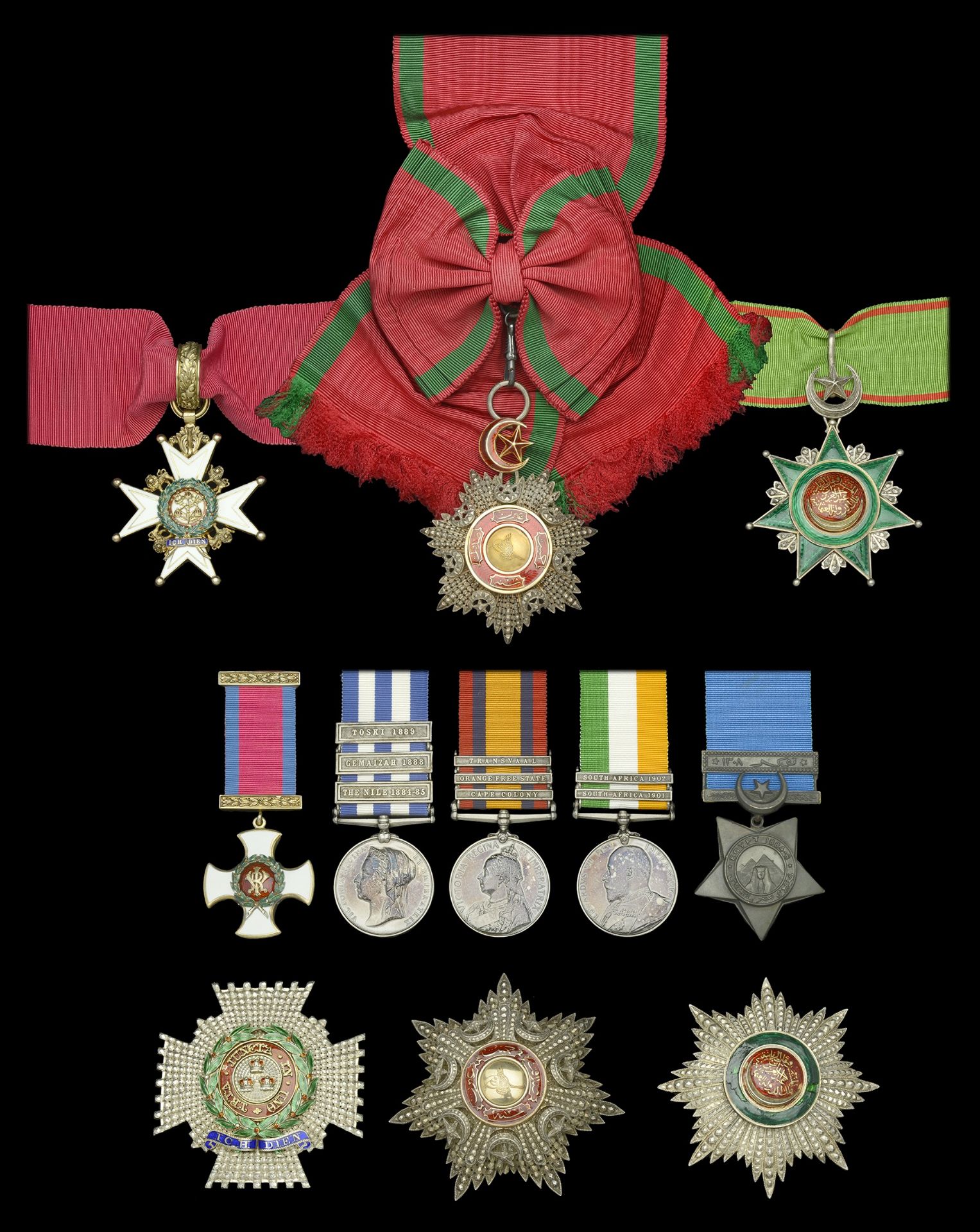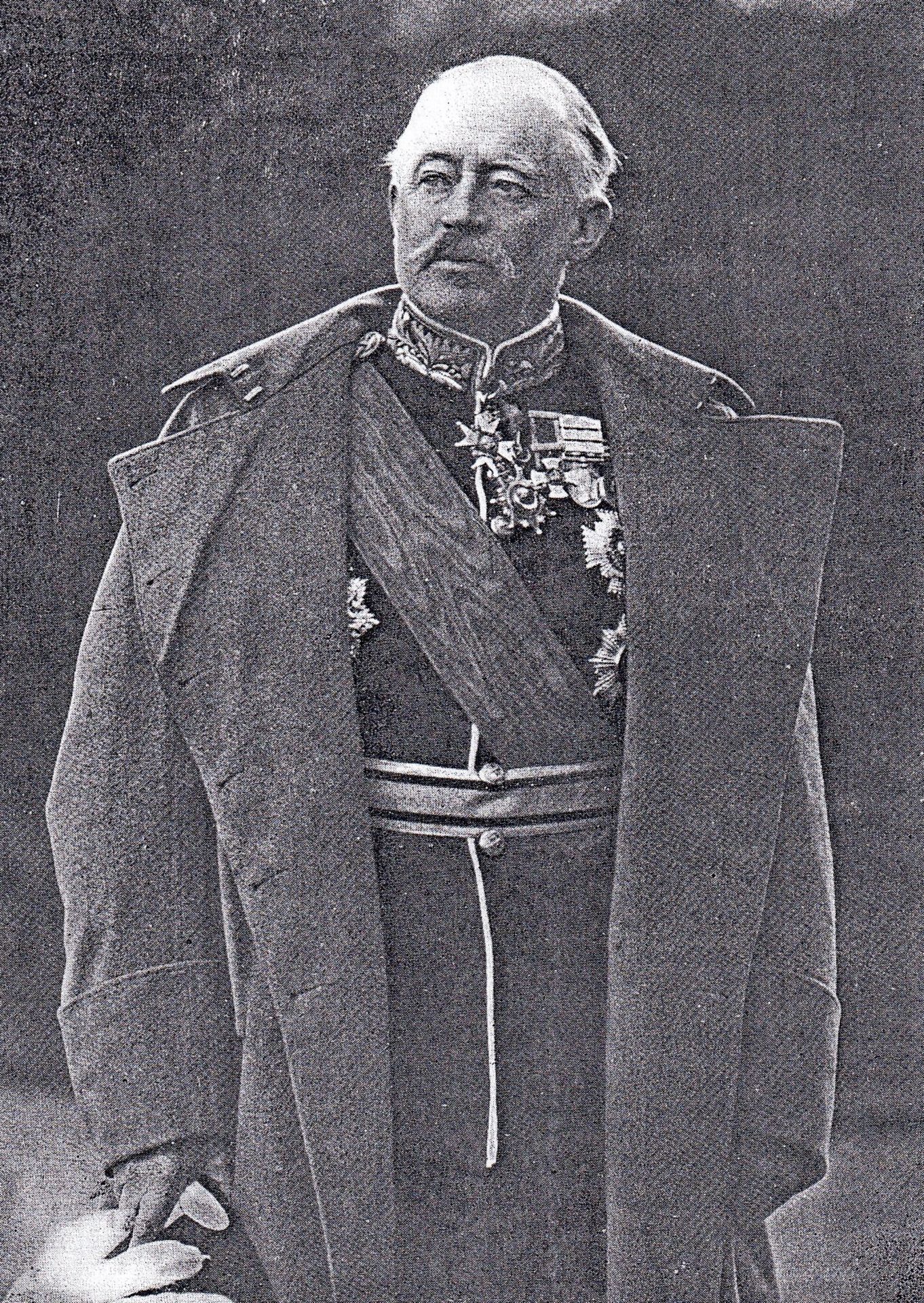The Important Boer War K.C.B., ‘Tokar Operations’ D.S.O. group of eight awarded to Lieutenant-General Sir Henry H. Settle, Colonel Commandant, Royal Engineers, who served as a Distinguished Column Commander in South Africa, and as General Officer Commanding, Cape Colony The Most Honourable Order of the Bath, K.C.B. (Military) Knight Commander’s set of insignia, comprising neck badge, silver-gilt and enamel, unmarked, with short section of riband for display purposes; and Star, silver and enamel, unmarked, with gold retaining pin, very minor enamel damage to motto on both pieces; Distinguished Service Order, V.R., silver-gilt and enamel, with integral top riband bar, retaining pin removed; Egypt and Sudan 1882-89, undated reverse, 3 clasps, The Nile 1884-85, Gemaizah 1888, Toski 1889 (Cpt. H. H. Settle. R.E.) side clasp carriage adapted for wear; Queen’s South Africa 1899-1902, 3 clasps, Cape Colony, Orange Free State, Transvaal (Bgdr. Genl. H. H. Settle. C.B., D.S.O., R.E.) engraved naming; King’s South Africa 1901-02, 2 clasps, South Africa 1901, South Africa 1902 (Maj: Gen: Sir H. H. Settle, K.C.B., D.S.O., Staff) engraved naming; Ottoman Empire, Order of the Medjidieh, First Class set of insignia, comprising sash badge, silver, gold appliqué, and enamel, with mint mark to reverse, with full sash riband; and Star, silver, gold appliqué, and enamel, with mint mark to reverse, with retaining hook and two additional support hooks; Order of Osmanieh, Second Class set of insignia, comprising neck badge, silver, silver-gilt, and enamel, unmarked, with short section of riband for display purposes; and Star, silver and enamel, with mint mark to reverse, with retaining hook and two additional support hooks, enamel damage to green band around central medallion on star; Khedive’s Star, dated 1884-6, with Tokar clasp, unnamed as issued, generally good very fine (11) £8,000-£10,000 --- K.C.B. London Gazette 19 April 1901. D.S.O. London Gazette 30 May 1891. Sir Henry Hamilton Settle was born at Lewes, Sussex, on 27 January 1847, the son of Captain H. T. Settle, and was educated at Cheltenham College. He was commissioned into the Royal Engineers on 10 July 1867, and was promoted Captain on 9 November 1879. He served in the Nile Expedition of 1884-85, as Deputy Assistant Adjutant General and Deputy Assistant Quartermaster General, and was Mentioned in Despatches (London Gazette 25 August 1885). Promoted Major on 31 December 1886, he was seconded to the Egyptian Army as Surveyor-General and Q.M.S., and saw further served in the Anglo-Egyptian Expeditions, being present at the actions of Gemaizah, Suakin, and Toski, and was twice Mentioned in Despatches (London Gazettes 11 January 1889 and 6 September 1889). Promoted Brevet Lieutenant-Colonel, Settle served as C.S.O. in the Expedition to retake the Tokar Delta in 1891, and was created a Companion of the Distinguished Service Order for his services during the action of Afafit. He was subsequently appointed Inspector General of the Egyptian Police in 1892, and was promoted Lieutenant-Colonel on 1 August 1893. In 1895 he returned home to take up the appointment of Assistant Inspector General of Fortifications at the War Office, for which work he was appointed a Companion of the Order of the Bath, and was promoted Colonel on 30 March 1899. For a few months in 1899 he commanded the Royal Engineers at Malta, before being called up to serve in South Africa during the Boer War, initially as a Colonel on the Line of Communications in the Cape Colony. Services in the Cape Colony At the end of February 1900 there were serious signs of organised disaffection in the Prieska, Britstown and Carnavon districts of the Cape Colony. Lord Roberts ordered a force to be organised to deal with these problems and Settle took command of one of the Columns. The Column consisted of Orpen's Horse, about 60 strong, one Company of Mounted Infantry, one Field Battery and half a Battalion of Infantry. It assembled at Hopetown and advanced on Prieska. It was so proficient that, when it spread, Settle was soon commanding three Columns to deal with what was becoming an increasingly serious rebellion. The suppression of the rebellion was conducted by Settle's Columns and those of Lord Kitchener, who Roberts had expressly detached from his Head Quarters to work alongside him. By the time Kitchener arrived, Settle had put down most of the rebellion and there was merely some mopping up to be done. What could have been an enormous military and political embarassment to the British, Boer dominance in part of a British Colony, was dispelled. ‘The Transvaalers and Free Staters, and many of the prominent rebels, had escaped to the districts north of the Orange River; but the whole of the rebel committee was captured, including the Rev. Mr. Schroeder, the Bond Member of Parliament for the district. Arms were collected, prominent prisoners were detained in custody, and the less important rebels were laid under an obligation to come up for trial if required. Small garrisons were left in Upington, Kenhardt, Draghoender, and Prieska, and a force of 150 Bastard Scouts, under European Officers, was organised to assist in patrolling the districts. Then Settle returned to Cape Town to resume his work as Inspector General of the Lines of Communication, and the rest of his troops were drafted off to Bloemfontein’ (Times History refers). The suppression of the rebellion allowed Roberts to continue his advance on Bloemfontein, checked any furtherance of it and meant that when De Wet invaded a year later, the inhabitants of Cape Colony did not rise again. Settle was called on later in 1900 to lead a column in Roberts' Orange Free State operations, a column that became known as ‘Settle's Imperial Circus’, of which the Times History had to note: ‘It is no disparagement to Settle, who worked hard and well in relieving garrisons and destroying supplies, to say that his column was dubbed “Settle's Imperial Circus”. The same humourous description would have applied to nearly all the unwieldy columns of this period.’ Lord Roberts was to write in his Despatch: ‘Further to the south and west, in the country extending from Modder River to Vryburg and Schweizer Reneke, the operations were entrusted to Major-General Settle, who left Christiana on 13 October with 600 mounted men, 10 guns, and 1350 Infantry. He occupied Bloemhof on 14 October, having captured 1,000 head of cattle, 12,000 sheep, and 80 horses belonging to burghers who had violated their oaths of neutrality, and he secured 50 prisoners. On arriving at Hoopstad on 17 October, I instructed him to co-operate with Hunter by marching on Bothaville. Hunter, who was then near Kopje Alleen, about 14 miles north-west of Ventersburg Road Station, had received information that 1,600 Boers were moving from the south-east on Bothaville, and was following them up with half of 1st Battalion Sussex Regiment and half of 1st Battalion Cameron Highlanders, of Bruce Hamilton's Brigade, Rimington's and Le Gallais' mounted troops, and the 3rd Cavalry Brigade (Porter's). Hunter reached Bothaville on 20 October, and sent the 3rd Cavalry Brigade to Commando Drift to reconnoitre that crossing of the Vaal and to communicate with Settle. Meanwhile Settle was attacked on the night of 19 October at Elizabeth’s Rust. After a sharp little engagement, lasting 45 minutes, the Boers retreated to the north bank of the Vaal. Our casualties were one Officer and 15 men wounded. On 21 October, the 3rd Cavalry Brigade met Settle's advanced troops under Colonel Sir Charles Parsons, as neither force had seen anything of the Boers, Settle retraced his steps on 22 October to Hoopstad, and Hunter reached Kroo...







